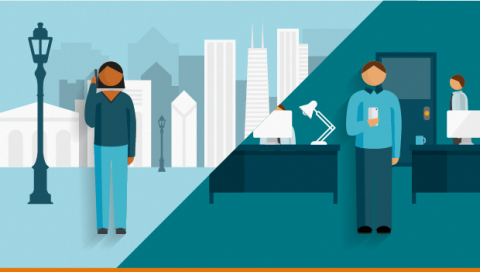No matter what industry you talk to, a common discussion is the changing face of our workforce. The consumerization of IT and millennials disrupted previous perceptions of when, where and how to work. And now the next phase of work requires an intentional focus on the employee experience.
According to a recent KPMG report, 67 percent of CEOs believe the next three years will be more critical for their industry than the previous 50 years. While technology is behind this period of massive disruption, a strong workforce is required to quickly execute on a vision in the digital era.
However, having a strong workforce isn’t just about having the right people for the right jobs. Businesses should think, “How can I keep my employees engaged and empowered throughout their time at our company?” Companies with engaged workforces will outperform those without by 200 percent, according to training organization Dale Carnegie.
My assumption is that most organizations think their workforces are already engaged, yet many are not. Smart companies will acknowledge the need to build an employee-centric business.
Corporate transformation: a technological and cultural shift
True transformation to become an employee-centric business requires not only technological change but a whole new way of thinking.
This shift involves departmental silo busting. Enterprises shouldn’t look at the intersection of HR and IT for example, but how the two departments (and others) work together to create the optimum employee experience across technology, workspace, policy and management.
Technology can provide many solutions for these disruptive changes and enables how we can positively impact employee experience. But you also need tech savviness from the C-suite down, including a stellar CIO who can both innovate and keep the data center humming to deliver a usable, contemporary and consumer-like digital environment.
When IT works in harmony with HR and other administrative service teams, it can create an insight-led, malleable employee experience that is positive for the employees and company. IT and the technology and services it provides enable a whole new way of listening to employees. Every time an employee uses an app, for example, that’s feedback that provides value.
Creating a digital workplace that enhances the employee experience
The digital workplace should take a unique shape depending on your individual business needs, but most importantly it must address what your employees want. A strong collaboration between IT and HR allows for new ways of delivering process and gaining employee feedback from which to draw actionable insight.
Mobile operator Vodafone is a great example. Wherever its 150,000 employees work, they rely on IT for uninterrupted productivity. Vodafone took on board feedback that employees were facing multiple IT service desks and getting distracted from work to log an IT problem. It took action by giving workers self-service access to the answers and tools they need based on location, role, and preferences.
General shifts in our working habits are crucial to address in a modern digital environment. It’s outdated to even talk about the workplace as so much of our work now happens outside of traditional offices and other work spaces.
Workforce mobilization is very important. Gartner predicts that by 2018, more than 50 percent of users will go to a tablet or smartphone first for all online activities. Companies should invest in giving employees secure mobile devices, tools and applications to work wherever, whenever.
Digital environments should give employees fast access to the information, resources and technology they need and it must be easy to use. For example, giving employees access to a corporate app store with peer-assisted selection makes it easy to get the right products and services within a few clicks. This boosts productivity and removes half the time spent on IT-related issues.
Importantly, while millennials have been the disruptors of the digital workplace, what 25-year-olds wanted yesterday is what 40-year-olds expect today. Every employee is interested in using consumer-friendly technology and gaining greater freedom around how and where they work. The lines between home and work are blurring and people now expect the same user-friendly capabilities at work that they get from their smart TV at home.
So in summary, the future of work is not about the company or the leadership or the team, it is about your employees and what they do, say, feel, and tell you each workday. If you can’t tell how your processes and technology are making people feel, you’re probably doing it wrong.
This disruptive way of thinking about how employees want to work sets companies apart. Employees are looking for greater flexibility and responsiveness from their company to feedback. Companies that get employee experience right will surpass others during this crucial time for all industries. And CIOs who recognize the need for usable, contemporary and consumer-like digital environments will be the ones to succeed in winning the war for IT talent.







